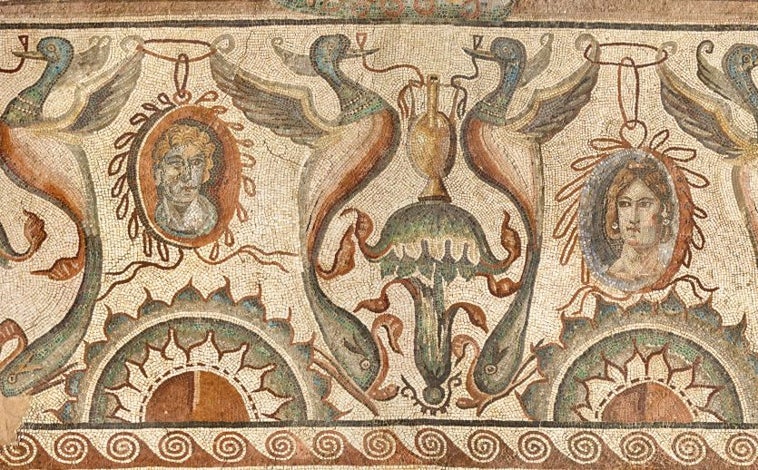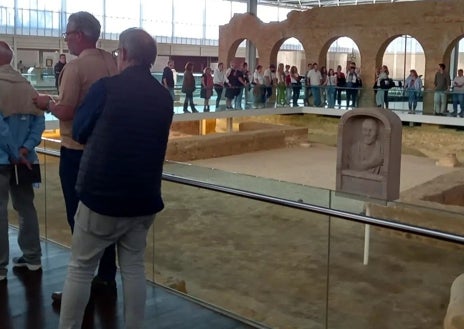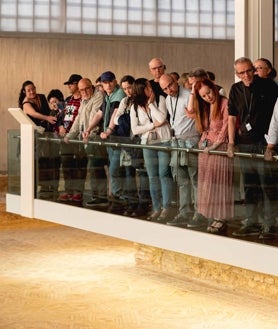La Olmeda (Palencia): Here, ancient Rome

By pure chance, some agricultural work stumbled upon an old wall and uncovered what is now one of Europe's most important archaeological gems. Research began back in 1968 in the area known as La Olmeda, in Pedrosa de la Vega (Palencia), and brought to light one of the most important sites in the Roman-Hispanic world, holding keys to understanding what life was like in the Late Roman Empire (4th century AD). A journey into the past allows you to visit, in the facilities that have been gradually adapted to the site, what was once a large rural mansion of some 4,400 square meters with a palatial feel and distinct rooms, a testament to the different statuses that existed in Ancient Rome. In total, some 35 rooms are distributed throughout what was the main residence and bathrooms, 26 of them decorated with around 1,450 square meters of some of the best-preserved polychrome mosaics in the world . Geometries and perfect compositions of colored tiles, among which the size and the good condition in which it arrived, many centuries after the one that remains in the main hall, stand out.
All this is complemented by the La Olmeda Museum in Saldaña, six kilometers away, where some of the objects found during the excavations are on display. Coins, fine tableware, tools of farmers and artisans, and funerary offerings placed in the tombs discovered in a place that faithfully bears witness to the history of the late Roman world.



Year after year, the Palencia Provincial Council, owner of the Roman Villa of La Olmeda (VRO), is responsible for creating a broad program of activities around the site to enhance its value and show the public its important role in understanding what happened centuries ago. Thus, the program, known as CVLTVRO, includes, until next April, a total of 69 activities and 17 series for all audiences. New features include "Archaeo-gastronomy," with historical reenactments of the delicacies and culinary arts of the period; "Eclipse with a P," which will feature workshops and talks on astronomical observations at La Olmeda; "Living History," also with reenactments, gymkhanas, and a Roman festival; and "El Aula Olmeda," to introduce children to the trades carried out at the villa and stone writing. Many of these activities will be held during the coming summer months.
Summer offers the opportunity to enjoy this range of activities, including the Saldaña Roman Market on July 19 and 20, and the "La Olmeda Nocturna" (The Olmeda Night Market), with five dates until October, featuring guided tours and tastings of Palencia products. Also included is the "Arquemúsica" series of concerts, workshops, and exhibitions, showcasing the "Hydraulis," the hydraulic organ already in use in the Greco-Roman era and which the Provincial Council has rescued and placed in the Roman villa.
But the province offers a range of tourist experiences in summer that extends beyond this magnificent site. As in previous years, the Provincial Council has put together a comprehensive program to fully enjoy Palencia in all its aspects: cultural, family, gastronomic, sports, nature, rural... Palencia invites you to find calm in the waters of the Canal de Castilla with pleasant boat trips, canoe rides, or bike rides along its towpaths; to delve into history with guided tours of its heritage symbols, complemented by a broad cultural offering that ranges from performances in charming squares and settings to journeys through world music, theater, dance, and children's activities, organ concerts in heritage sites, and early, classical, and folk music.
ABC.es





